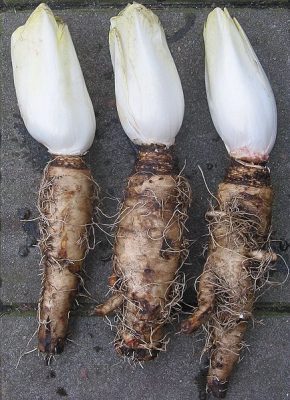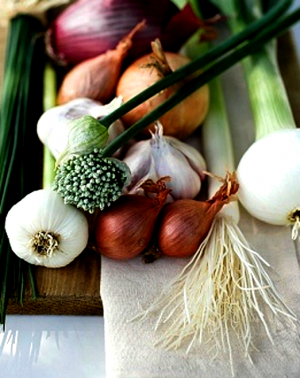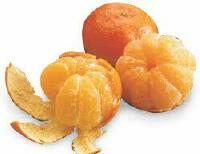 I learned something today. It’s a big catch. And instead of being ashamed… I am happy. Because we can all get better because of it.
I learned something today. It’s a big catch. And instead of being ashamed… I am happy. Because we can all get better because of it.
I don’t know about you, but I am always surprised when I learn something new. What there is to know rarely show up as something that is missing… and most of my reading rarely results in substantial learning.
But today, I learned two major things… What a day, eh?
One I can share about, the other: I am in the middle of it, so I’ll share once I have made it instinctive part of my life.
This one, the one I can share, is about digestion and well-being.
Before today I had never heard about prebiotics. Or if I did… I must have pooh-poohed it. Just like you pooh-pooh (to express disdain or contempt for; dismiss lightly) many of the things I write… lol.
Here is what prebiotics are: they are food for your good microbes in your intestines.
One of the plants that is a good food source for these good microbes is onions. Another garlic. I eat this all the time… so this has not been a problem for me.
I also don’t eat meat from animals that are treated with antibiotics… I only eat lamb.
But I used to use cow’s milk, and I bet that is full of antibiotics…
Over the past two months every time I went to the supermarket, I also had a cup of coffee with half and half or light cream. And every time I grew a fever blister by next day.
 Because your immune system lives mainly in your gut, that little cow’s milk product probably decimated my good microbes… Today I had nothing, no tea, no coffee, just the energized water I brought with myself.
Because your immune system lives mainly in your gut, that little cow’s milk product probably decimated my good microbes… Today I had nothing, no tea, no coffee, just the energized water I brought with myself.
I hope I won’t get a fever blister this time. I hope I have learned my lesson.
If you watched Food, Inc. feeding grains to cows makes them develop e-coli infection and it is passes onto the flesh, the milk, to you… most of it is treated with antibiotics. Disgusting, if you ask me.
So, returning to Prebiotic… plants that are good food for your good bacteria to feed on is very important. If you don’t feed them, they die… and you can eat as many probiotics as you want, they won’t live… because you are not feeding them.
We could say that the importance of eating vegetables is to feed the good microorganism in our gut.
But what vegetables you eat really matters.
I have a client whose health, in spite of her following a strict diet, isn’t rising.
When I look at what she actually eats, I see no food that has prebiotic value, and I see food that kills the good bacteria…
And I look at another client who eats just as restricted diet, but adds onions and garlic to his diet daily… and his health is getting better by the day.
I am convinced that if the nutritional supplements don’t raise your overall health number, then the missing piece of the puzzle: prebiotics is what is missing.
xxx
What the heck is a PREbiotic food? We have known about probiotics, but prebiotics are new to most of us.
Prebiotics are food that feed the bacteria living in your intestines. Simply put, it’s a special form of dietary fiber that occurs naturally in onions, leeks, garlic, artichokes, and chicory. As the bacteria digests this special fiber, they multiply and crowd out the bad bacteria that causes bad breath, inflammation, leaky gut, foggy brain, indigestion, and poor absorption of nutrients, in your food and in your supplements.
The most frequent cause of your poor health is the poor assimilation of nutrients from your gut plus the leaky gut syndrome. Increasing your good bacteria will eventually decrease your bad bacteria and yeast, and start healing your leaky gut… improve your nutrient assimilation capability and your overall health.
Leaky gut is a health hazard when the bad bacteria and Candida can enter your blood stream and make your whole body, including your brain ill. They become systemic causing inflammation all over your body.
Foods highest in inulin, a water soluble fiber good gut bacteria loves most. The other surprising observation I have is that inulin is most abundant in bitter plants… Bitter is really good for you, but if you have TLB1, you probably avoid bitter like the plague. You are also probably sickly, and avoid life altogether…
- ground chicory root. Ever heard of chicory coffee? Before we had coffee in my childhood, we had chicory coffee for breakfast. I loved it. And it is good for me. Still. Whereas coffee gives me heartburn
- dandelion root — yes, the same exact plant that is nearly impossible to get rid off in your lawn. I can’t have it. I test ‘no’ for it, but it may be good for your constitution… It’s consumed mostly as a tea
- asparagus my favorite even though my pee smells like hell… I most like it in cream soup, or by itself with butter. Cooked, of course.
- leeks and onions: of course. Daily. They are the best medicine.
- bananas and plantains (especially when they’re slightly green) Only one of my clients tests “yes” for plantains, and none for bananas. Why? Because the bananas you know and love are genetically enhanced… not good for you.
- sprouted wheat (such as the kind used in Ezekiel bread) I have had no client that was allowed to eat grains… so it is most likely, this is not for you.
- garlic: hell yeah
- artichokes: same as with bananas: most likely not on your food list
- fresh herbs
- yams
- burdock root
- camas root
- coneflower, also called echinacea
- jicama
- yacon root
Warning: if the inulin-rich food item is not on your food-list I muscletested for you, ask me to muscletest it for you, or choose some food item that is on your food-list. Just because it has inulin, it may have other things that can harm you.
Here are a few of the best prebiotic foods to eat now:
- Chicory root – Chicory is, hands down, the best source of prebiotics. It contains a lot of a fiber named inulin, which feeds the gut bacteria and encourages them to grow. You’ll find improved digestion and reduced risk of constipation, as well as an increase in bile production, thanks to the inulin in chicory root.
- Jerusalem artichoke – You may never have heard of this food, but if you can find it, it’s totally worth eating. Also known as an “earth apple”, this artichoke contains 2 grams of fiber per 100 grams of vegetable. 76% of that fiber is inulin, which makes this one of the best prebiotic foods around.
- Dandelion greens – This is one food you won’t find in the supermarket, but you can gather them in the wild and eat at home or on your camping trip. Dandelion greens contain 4 grams of fiber per 100 grams of greens, and a lot of that fiber is inulin, the prebiotic. These greens are amazing for promoting healthy digestion and elimination of wastes, as well as improving your immune system.
- Asparagus – These little veggie spears are one of the best vegetables to eat, and not just thanks to its prebiotic content. In addition to providing a lot of fiber (2-3 grams of inulin per 100 grams of asparagus), these veggies provide antioxidants that can reduce inflammation and improve your overall health.
- Onions – Onions rank at the top of the list of prebiotic foods, thanks to its high inulin content. They also are loaded with fructooligosaccharides, another prebiotic nutrient that adds flavor and improves gut bacteria. It’s even useful for the breakdown of fat, and can increase nitric oxide production. Definitely a food to add to your diet!
- Garlic – Garlic also contains a lot of fructooligosaccharides, which is why it gives a sort of sweetness to your food. The inulin content of garlic rivals that of onions, making it a highly effective food to improve your gut health. It’s also useful for fighting heart disease, cancer, and other diseases. It’s highly efficient at killing off disease-causing bacteria.
- Leeks – Just like onions (leeks and onions belong to the same family), leeks are an amazing source of inulin fiber—16% of the fiber content is inulin. The fiber will promote the breakdown of fat in your body and can increase production of the important gut bacteria. You also get a lot of Vitamin K, which will improve bone and heart health.
PS: When your bad bacteria and Candida dominates your gut, you need to eat what they want you to eat, what feeds them. They tell your brain what to crave.
I used to hear their squeaky voice demanding “Sugar, sugar” in my head.
If you crave sugar, bread, cookies, candy… you can be 100% certain your bad bugs dominate your gut, and dumb you down, make you stupid, and obey their dietary requirements. So you are a walking-talking bad bug. Start feeding your good bugs, for god’s sake!

Asparagus cream soup
Get into the habit of making bone broth. Use only the bones of animals you can eat. If you are on the grain free diet, it’s probably only lamb bones you can use. Put only onions and garlic into the broth, no other vegetables. No salt either.
Ingredients:
bunch of green asparagus
some onion, chopped (omit if broth has onions in it). Quantity is to taste. I like my asparagus soup with only a little onion.
unsalted butter
broth that has only ingredients you can eat
goat cheese (I used 1/4 of a small goat cheese log). Makes the soup nice tangy.
Quantities depend on how many portions you make and how thick you like your soup.
I used a frozen asparagus package, 8 oz to make my soup yesterday. It was enough for two large bowls of soup.
Cut stalks into 1/2-inch pieces, break them if frozen.
Sautee onion in butter, stirring, until softened. Add asparagus pieces and salt and pepper to taste, then cook, stirring, 5 minutes. Add broth to cover, or more, and simmer, covered, until asparagus is very tender, 15 to 20 minutes.
When asparagus is tender, let it cool a little, so it doesn’t burn to the touch. Purée soup in batches in a blender until smooth, add goat cheese, blend it in. When smooth return to pan. Add more broth if too thick. Season with salt and pepper. Bring soup to a boil and whisk in more butter if desired.
Please. That would be fabulous… My husband will be very happy too 🙂
Yes Wendy. My clients who cook appreciate onions etc. because they make everything yummy. Thank you for your feedback. Shall I write up my asparagus cream soup recipe?
Since switching properly to your menu, I have fallen in ‘love’ with leeks, onions and garlic. While I was poorly, the Nature Doctor book kept prescribing onion poultices, as well as horseradish(also on my list.. it was uncanny how food can be medicine.)I wasn’t aware of prebiotics either.. new respect for these humble veggies.